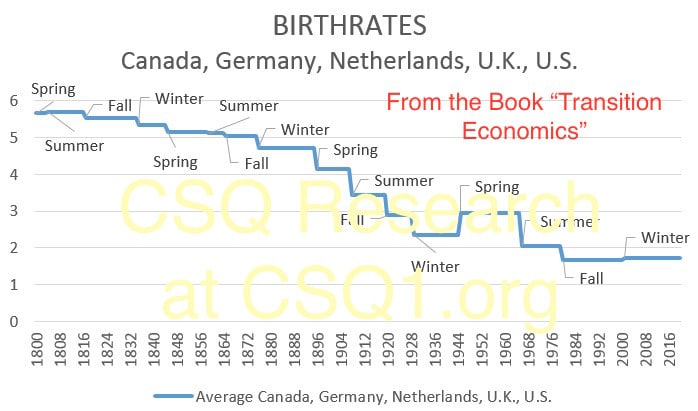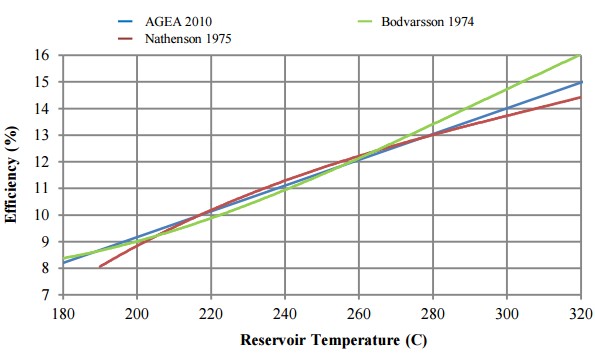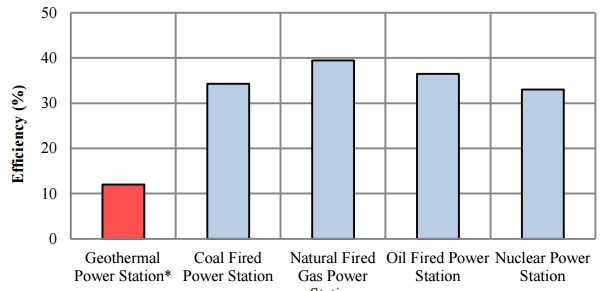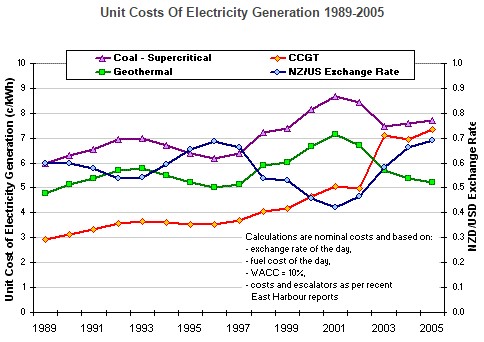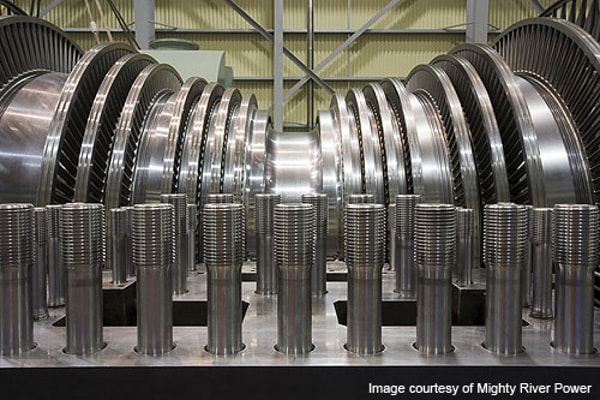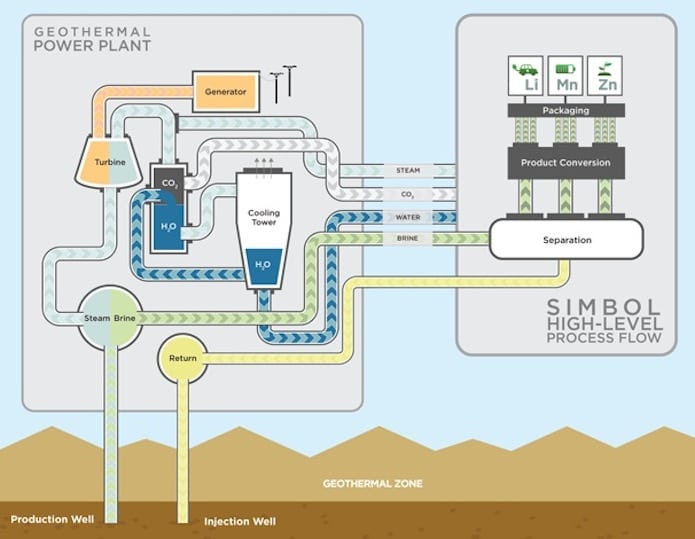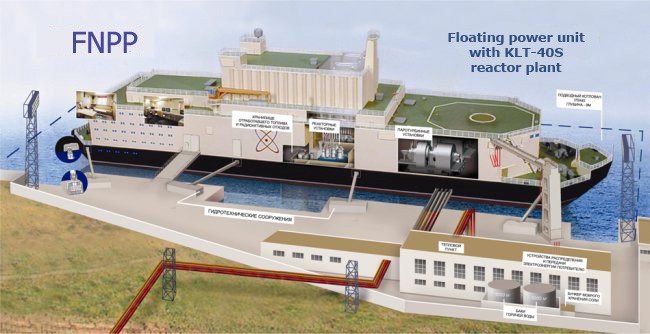Tagged: Carbon, CO2, Cold Fusion, Combustion, Energy, Fuels, Geothermal, Nuclear, Rapid Breeder Uranium, Thorium
- This topic has 0 replies, 1 voice, and was last updated 7 years, 7 months ago by
etilley.
-
AuthorPosts
-
September 26, 2016 at 8:51 pm #4793
etilley
KeymasterEnergy Policy

The following article is an excerpt from the new book Transition Economics by Edward Tilley… available fall 2016 at Amazon, Apple, and Ingram.
Few pursuits can have a more positive impact on any society than the project to create clean and abundant energy.- Prosperity Depends on Energy
- Prosperity stabilizes population
- Therefore, Energy can stabilize Population worldwide too
Citation: Slides from http://www.thoriumenergyalliance.com/downloads/AimHigh.pdf (Slides 5 & 6)
Note: I use the word “Abundant” and not “Conserving”; read more about New Energy Poverty here.
Energy Conservation does not stop consumption needs from growing and we definitely do not want prosperity nor opportunity to be scarce either. Energy – creates Clean Water and Food; Energy drives Prosperity; and Energy is the cornerstone to building a Good Life for everyone.
When energy and prosperity are abundant, and living is easily affordable with one income per family (these time-periods are indicated in the Chart below as “Spring” Economies), fertility rates are almost double the unsustainable one & two-children families of today.
It is fundamentally important, therefore, to endorse only energy technology and science that makes inexpensive energy abundantly available. All other energy sources should always take a distant back seat – this is especially true inside a K-Wave Winter as we see today.
Clean CO2 is Essential
CO2 is a foundation of life on this planet; plants need CO2 to live and globally we are at the lowest levels of CO2 in our planet’s long history as well. According to the scientific record, the downward trend in CO2 is so pronounced these past two hundred millions years that we may actually have to, perhaps a million years from now, generate CO2 into our air artificially in order to continue to live here. Terrarium owners often mix a little vinegar with baking soda to fill their tanks with Clean CO2 – for one example.
Contrary to Al Gore’s message in 2007, CO2 does not drive global warming – rather, it is warming that drives CO2; there is much evidence in science to prove this fact and much mis-understanding by non-scientists. The varying cyclic tilts of the earth in relation to the sun have had more to do with global warming, than CO2 ever has.
So CO2 creators like Combustion – a form of energy harvesting – by itself is far from the nemesis that special interests make it out to be. This said, we absolutely do not need the toxins that fossil fuels also send into the air during combustion. The dingy yellow cloud that sits over major cities during temperature inversions are clear evidence of this problem.
Clean, toxin-free CO2 is essential and current levels are well below historical CO2 levels that permitted all of our species to thrive on this planet. See https://youtu.be/5Smhn1gL6Xg for more.
Balancing Acts in Energy
Environmental lobbyists have been guessing at, and Engineers & Scientists have been working on, the expensive question of what are the most sustainable energy technologies since the industrial era began in the 1850s.
During the past 60-years, Science has routinely been forced to take a back seat to finance-driven sponsors of Wind, Solar, Fossil Fuels, Uranium Nuclear Power Plants, and other special interest decisions that hardly qualified as our best next steps in energy.
The Future of Energy is Thorium – 6th TEA Conference Attendees
So, let’s level-set now, step back and take a look at what are the most promising, sustainable sources of energy that can carry us all most easily into the next cycle of clean, inexpensive, abundant and sustainable power.
I prefer to think in practical lines and so the two categories that I tend to think of energy along are Full-time vs Part-time Energy Production:
Full-Time Power Generation
Our power generation options can be categorized by efficiency, cost, safety, and by full-time vs part-time availability. Obviously the most reliable, cheapest and safest full-time energy sources are preferred before any other.
Geo-Thermal Electricity
Low-CO2, Usually cheapest, Renewable, Concentrated
 Whenever you can dig down into the earth to heat a sufficient amount of water to a sufficient temperature, you can run a city on the energy created. How is this possible? I will take you back to grade 1 Geography class, you might recall that our planet is a naturally-occurring Thorium, Salt and Uranium Nuclear Reactor, and so the deeper you drill, the hotter the temperature of the hole gets.
Whenever you can dig down into the earth to heat a sufficient amount of water to a sufficient temperature, you can run a city on the energy created. How is this possible? I will take you back to grade 1 Geography class, you might recall that our planet is a naturally-occurring Thorium, Salt and Uranium Nuclear Reactor, and so the deeper you drill, the hotter the temperature of the hole gets.The nuclear reactions below our planet’s surface create both tremendous heat (6650 ° C at center), and they create the strong electro-magnetic fields that prevent our planet’s atmosphere from being blown away as they have on Mars. Like our moon, Mars has no molten core and, therefore, it has a much less powerful magnetosphere – as seen in this chart to the left.
http://ircamera.as.arizona.edu/NatSci102/NatSci102/lectures/earth.htm
http://www.desmog.ca/2014/02/26/top-5-reasons-why-geothermal-power-nowhere-canada
 Geothermal Energy is abundant, clean, renewable and can be generated almost anywhere. The map above shows the heat energy of Canada at 6.5 kms below surface.
Geothermal Energy is abundant, clean, renewable and can be generated almost anywhere. The map above shows the heat energy of Canada at 6.5 kms below surface.The rate of cooling of the Earth is approximately equal to 300-350° C every billion years. 98% of the heat remains in mantle and cores while 2% are absorbed by the crust. That 2% amounts to 840 billion watts of geothermal energy – which is enough to meet the needs of humanity for a very long time.The deepest bore-hole in the world is in Kola, Russia at 12 kms (7.5 miles) deep. The Earth’s center is 6,400 kms (4,000 miles) so this barely scratches the surface and probably does not extend through half of the distance to the earth’s mantle. Temperatures at the bottom of Kola are 180 degrees Celcius (356°F).
http://www.iflscience.com/environment/deepest-hole-world/
Lava and molten rock are mantle rock that escape through fissures in the crust. Their temperatures are 700 to 1200 ° C (1,292 to 2,192 degrees Fahrenheit) and so stable active volcano ranges like the one in Hawaii, create highly accessible geo-thermal power plants. To get more heat elsewhere, simply dig deeper.
Commercial 6-km (18,000 ft) fracking wells cost $8 – $12 million to build, so count on a cost of roughly $20 million to drill a feed and return hole. All in, a geo-thermal plant can cost $200 to $850 million and power 50,000 to 150,000 homes; the highest cost plants will include a Lithium-extraction filter technology (see below).
Cirenergy, a Canadian Company, hopes to substantially reduce the cost of building geothermal plants through automations in their construction and maintenance.
Compare this cost to roughly $2 to $10 billion for a Rapid Breeder Uranium Reactor – which heats water to 300°C; or a Thorium Fluoride Salt Reactor – which heats water to 700°C for around $300 million.
With Geo-Thermal, engineers dig holes/bores and then pump heated water from the holes. The geothermally heated water drives a power plant.
https://en.wikipedia.org/wiki/Geothermal_power
In 2015, there were 18,500 Geo-Thermal Power Plants Worldwide, almost double the number from 2010. Canada has no Geo-Thermal Plants in 2016.
The chart above shows that the efficiency of Geo-Thermal plants are widely dependent on the heat of the water extracted. If water temperature is low, efficiency can be low as well. If water temperature is higher, efficiencies of 20% and more are possible.
Uses for Geothermal Water
Above 140° C – Power Generation
less than 100 ° C – Heating systems of buildings
About 60° C – Hot water systems
less than 60° C – Geothermal heat for greenhouses, geothermal cooling plants, etc.The Unit Cost of Geothermal in New Zealand is 20% shown below in Green with boxes lower than High-CO2 alternatives of Coal and Natural Gas (CCGT).
https://www.geothermal-energy.org/pdf/IGAstandard/NZGW/2012/46654final00097.pdf
http://www.nzgeothermal.org.nz/price.html
In countries where Natural Gas is abundant and cheap, often a Carbon Tax makes the difference between Geothermal being profitable – and very profitable.
Water and Steam are most often used to generate electricity in turbine-driven power plants because steam expands very rapidly to 1000-times the volume of water. Pressurized Water at 140 ° C requires a very large turbine (one that is perhaps the size of a classroom) and a relatively large volume of water to generate energy. Water heated to 700° F under pressure, takes far less water and needs a much, much smaller turbine (from fifteen stages down to as few as four) to extract the create the same electrical energy . The smaller-turbine solution are available at lower liquid temperatures for recompression closed Brayton cycle (RCBC) Supercritical-CO2 systems as well because CO2 gas is twice the density of steam.
S-CO2 systems are preferred for efficiency because 10% to a theoretical 50% additional conversion efficiency might be possible by using CO2 verses conventional water and steam today, but as yet there are no working production CO2 systems in operation. The DOE in the US announced a six-year plan to build a 10MW S-CO2 system in October 2016. If all works to plan, CO2 could replace steam-based electrical conversion systems in a decade.
Lithium and GeoThermal ?
In their December 2015 Report, Goldman Sachs described lithium as “the new gasoline”. California-based Simbol Materials began extracting lithium, manganese and zinc from the hot brine pipes of the 50-megawatt geothermal power plant that operates near Salton Sea in Imperial Valley, California in 2010. Lithium is not considered a rare substance but it is most often collected in mountainous areas where brine ponds were evaporated by the sun.
The company initially set up a prototype system that filtered 75-liters of brine per minute from an operating geothermal plant as a proof of concept. In September 2011, the company opened its factory for the production of ultra-pure lithium carbonate (a basic raw material for industrial production of lithium).
After falling into receivership after a failed $350 million investment deal by Tesla in 2014, Simbol’s Technology was purchased by TZK Ventures, a partnership between Talon Technologies Group, a Washington, D.C.-based technology firm, and China-ZK, a state-owned energy company in China. Chile’s Atacama Salt Flat is home to the most significant source of lithium; here, one project supplies fully 20% of the world’s total lithium.
Construction on the Simbol Materials Geothermal lithium collector in California will start next year, and it anticipates up to 16 000 tonnes of lithium carbonate per year. Market rates for Lithium are $7,000 per tonne and rising. At these estimates, the Salton Sea plant might generate $112 million per year in lithium sales in addition to its electricity sales. These output levels are also comparable to the capacity of the world’s major producers of this metal – and most of the production is planned for sale in Asian markets.
Currently, industrial volumes of lithium are obtained from mining minerals and then heating them into brines. This feedstock process requires a considerable expenditure of energy, water, soil, and creates an associated “production” hot waste as well.
Simbol Materials’ system can be easily connected to existing geothermal power plants. In the circuit of a power plant, the lithium-rich solution is already raised to the surface and it now only needs to process, and this is the main beauty of Simbol Materials’ design.
If the new company’s plan succeed, countries using GeoThermal Power also stand to reduce their dependence on imports of lithium. If this idea works and is picked up in other countries, the world will receive an additional source of important raw material.
Hydro Electric
Low-CO2, Very High Efficiency, Concentrated, Renewable
Hydro (Water) Turbines operate at very high efficiencies of 85% and can work to create clean electricity for decades. Hydro can require very expensive generating station startup costs – including the construction of dams and sometime massive reservoirs. Installation will tend to consume a lot of CO2, but once built will operate with very low emissions and with few interruptions.
Nuclear Fission – Thorium Reactors
Low-CO2, Non-renewable, Concentrated Energy output
When you want clean reliable energy in close proximity to large populations – and geothermal is too disruptive to water tables, your next best alternative is cheap, plentiful, 30%-efficient Thorium Nuclear Reactors.
You might not be aware that there are many different types of nuclear reactors; there almost as many options as there are models of car brands in fact. Thorium Reactors were designed at the same time and place as our far more expensive Rapid Breeder Uranium Reactors, in the Oak Ridge National Laboratories near Nashville, Tennessee, U.S.A. in the mid-1950s and 1960s. A Thorium Molten Salt Reactor (the original test reactor was fed with Uranium oddly, but it was designed for Thorium) ran for five-years alongside a Rapid Breeder Uranium Reactor. The Director of the U.S. Nuclear Power Research Program stated very clearly that Thorium was the better choice for civilian power needs. Thorium – was better for reasons of safety, economy, reliable power production, and more responsible radioactive waste management options.
Read the following comparison of energy available to a low cost reactor … (Reference http://www.thoriumenergyalliance.com/downloads/thorium_Energy_Generation.ppt)
This slide explains, that a 6 kg nodule of Thorium in a liquid-fluoride reactor has the energy of:
- 230 train cars of Bituminous Coal
- 600 train cars of Brown Coal
- 440 cubic feet of natural gas (that’s 15% of a 125,000 cubic meter LNG tanker)
- 300 kg of enriched (3%) Uranium in a Pressurized Water Reactor
For reasons of reliability (Rapid Breeders don’t stop – which can become a safety concern) and because Thorium Reactors don’t produce weaponized plutonium (an important consideration through the cold-war years), U.S. President Richard Nixon funded the adoption of Rapid Breeder Uranium Reactors – and Thorium Reactor research was halted. Search the document (http://web.archive.org/web/20101005073843/http://www.geocities.com/rmoir2003/moir_teller.pdf) for “Excusable mistake” to read an explanation of why the Thorium Reactor program was halted.
To understand why today’s Nuclear Industry defends its 470 rapid breeder uranium reactors vigorously – with little interest in Thorium – consider the investment and revenues are made available to reactor manufacturers, security services, militaries and weapons manufacturers – who all earn handsomely from this status quo.
A GE (General Electric) or Phillips reactor must be fed a specific blended ultra-high-profit fuel pellet, delivered from the manufacturer of the reactor – for the life of the Reactor, or the warranty is void. None of this is a requirement and revenue stream for Thorium Reactor manufacturers.
Like an ink-jet printer, Reactors are built as a loss leader to secure lucrative long term fueling contracts. I imagine that an upstart employee might be risking their position by making mention of considering a shift away from Uranium Reactors.
China, India, France and the U.S., have begun to design and build Thorium Reactors with an estimate of 2030 for large-scale electricity production.
http://economictimes.indiatimes.com/news/science/india-doesnt-lag-in-developing-thorium-fuelled-nuclear-reactor-mr-srinivasan-former-aec-chairman/articleshow/52489649.cms India’s Advanced Heavy Water Reactor (AHWR) Designs are based on improvements to Thorium designs from the 1960s – and, with India sitting on the world’s largest deposits of Thorium, they strongly prefer this option to replace their country’s inefficient and air polluting Coal Power Plant Infrastructure.
Once successful, the worry becomes that we in the West may very shortly have to buy, or licence under-patent, our own reactor technology. This should sound like a considerable opportunity and wake up call for both Government and the Nuclear Industry.
Construction costs for Liquid Fluoride Thorium Reactors are much lower – approximately $200 million, than for Rapid Breeder Uranium Reactors which can run into the several billions of dollars ordinarily. Spent thorium fuel is less voluminous and has a much shorter storage and radio-active half-life than Uranium.
Thorium Reactions require constant “feeding” of fuel – and as soon as the conveyor belt feeding the fuel to the reaction stops, so stops all reactions – immediately. Uranium Reactors, in comparison, must have cooling pumps operational at all times in order to avoid the reactor overheating and melting down – as was saw in Fukushima, Japan in 2011.
Diamond Batteries – Turning Radio-active Waste into 5,000 Year Batteries
The “Diamond Battery” solves fission radioactivity problems by creating a 5,000-year battery out of nuclear waste. By encasing the waste in synthesized diamond, the Diamond Battery has the radioactive signature of a banana and yet it powers small devices like a pacemaker easily and it won’t need replacement for 5,000 years. At a point, it certainly seems reasonable to assume that market demand for these batteries will be very high until we will not be able to keep up with the demand for these radioactively-fueled batteries – and begin to seek more waste in fact.
The perfect fission energy solution would create a waste pellet that could be immediately converted into a 5,000 year battery.
Fusion – Cold and Hot
Low-CO2, Inexpensive Cold, Expensive Hot, Concentrated
Clean, safe energy forever. Cold Fusion’s name has changed to LENR (Low-Energy Nuclear Reactions) recently; I suspect the reason, to be brutally honest, is to ease the scientific peer-reviewing community’s embarrassment at having irresponsibly ignored and even snubbed important development and research into Cold Fusion since Doctors Pons and Fleishmann first announced its discovery 25-years ago in 1989.
This slide from Brillouin Energy explains that there is enough energy in the hydrogen of a glass of water to power 30,000 homes. Real world measurements on how concentrated are Cold Fusion reactions have yet to be publicly announced but clearly there is fantastic potential. The reason for the excitement is that Cold Fusion appears to work as a power amplifier, taking one unit of power and returning six to ten just like it – and we are still in early days.
Nuclear Fusion does not create radioactive waste, as does Nuclear Fission. Of the two, Nuclear Fission has been far easier to make work reliably than has Fusion.
If there was ever a case to say that money is a very bad thing; or that academia’s peer-review protocols are failed as well, surely Cold Fusion’s bungled reputation, legal, patent and financial encumbrances surrounding the development and rapid rollout of safe Cold Fusion Power Plants showcase both.
With too many accredited scientific voices, governments, and major companies pouring money into LENR to ignore in 2016, 2017 promises to be a disruptive year for the status quo power industry. http://www.e-catworld.com/2016/09/16/new-scientist-cold-fusion-is-back/
LENR is in the public domain and, by any name, this new energy technology promises no less than simple, clean, abundant and sustainable energy.
Hot Fusion too is right around the corner. Cold Fusion is exponentially simpler and less expensive than “Hot” Nuclear Fusion reactions – which are still to be proven in full-production trials. The expectation of scientists is that Hot Fusion should be available within the next ten years. Germany recently succeeded in completing a successful test of its Hot Fusion plant when it momentarily created a successful plasma stream in a trial within this past year.
Plasma, the fourth state of matter, streams out of a Hot Fusion reactor at temperatures in the billions of degrees Celcius; a temperature far too hot to be contained by anything other than very strong magnetic fields.
Combustion
High-CO2; Reliable, Concentrated, On-Demand, Non-Renewable
Combustion is one of the least efficient means of extracting energy from matter. Our total life-time energy needs would require us to combust enough firewood to fill a gymnasium. In comparison, the fission of Thorium, could supply that same amount of energy very safely with a Billiard-ball-sized amount of readily available rare earth.
- Gasoline combusts with 15% Efficiency
- Diesel combusts with 30% efficiency – this is the highest efficiency of any combustible fuel.
- Natural Gas – 5% to 10% efficient
- Fuel Oil – 5% to 20%
- Coal – 15% to 60%
- Clean Fuels – 30% Efficient (see Clean Fuels below)
- Wood & Wood Pellets – Renewable
http://www.engineeringtoolbox.com/boiler-combustion-efficiency-d_271.html
Combustible Fuels can be detonated in Generators to generate electricity, or can be burned to convert water to steam for collection by turbines.
The Catalytic Converter was added to gasoline cars as an emissions necessity in the 1970s. Its function is to reburn the gasoline that is missed during combustion. Modern Diesel engines run lean and at much higher fuel injection pressures until they do not have to reburn missed fuel. Instead of a catalytic converter, diesel cars have a filter that addresses the NOX emissions of fossil-fuel. So, not only is combustion inefficient, gasoline vehicles are inefficient at combusting gasoline as well.
Solar Thermal Tower
Low-CO2, Efficient, Concentrated, Renewable
$5.27 cents per Kwh
Suitable from high-sun regions, concentrated, reflected sunlight is used to superheat water or molten salts to temperatures of 550 degrees Celcius. The molten salts method retains heat for power generation when the sun is not shining but it also requires a morning startup procedure that gets the plant up to operating temperature using alternate fuel sources. In this configuration, the molten salts heat water into steam which drives Steam Turbines.
The design does unfortunately, kill bird-life; the air at the tower is superheated and birds flying into the pond-like mirrors, quite literally burst into flame at a rate of one every two minutes at times. https://en.wikipedia.org/wiki/Solar_power_tower
Nuclear Fission – Rapid Breeder Uranium
Low-CO2, Reliable, Least Safe, Expensive, Concentrated, On-Demand
Very expensive to build and operate; not appropriate in close proximity to very large populations; security of facilities and spent fuel is also very expensive and the risk of melt-down and radioactive contamination exists although on only three occasions.
Nuclear fission remains a heavy-lifter in clean power generation throughout the world. There are 470 of this type of Nuclear Power Plants in operation. Fukushima’s accident was the first meltdown in 25 years – and Uranium reactors can never explode like an atomic bomb either. Explosives require much high levels of enrichment than the 5% fuel used in reactors.
Russia’s brilliant new floating nuclear fission reactor ships are another mobile power-generating option based on a proven 50-year icebreaker design. This solution is designed to pull up beside major cities, in China and elsewhere, and supply mobile power on demand (Diggs, 2015) (OKBM, n.d.)
ThermoElectric
No-CO2; 8% efficient, Clean, Dilute
Uses Heat-sources, anytime of the day or night, to create electricity directly from the flow of electrons across semi-conductors (using the Seebeck effect). Once semiconductors are attached or exposed to heat sources like steam pipes, wood stoves, or even the temperatures within your car in summertime, heat is converted into electricity.
Replacing the alternator in a car with a thermoelectric exhaust pipe lining, is one example application. TECTEG Manufacturing, is working with McMaster University to produce high amperage cells for high-temperature environments. Its devices are engineered to deliver 100-200 amperes (enough electricity to meet the peak needs of a modern home).
(see https://www.youtube.com/watch?v=YhynSkFlJOs and http://insights.globalspec.com/article/98/can-thermoelectric-generators-compete-against-solar-photovoltaics)
Part-time Energy Production
We frown on part-time energy solutions at CSQ Research due to their front-and-center presence in every New Energy Poverty problem within every major country that adopts Wind, Solar Panels, and similar. High Costs of purchase, finance, and maintenance, along-with unpredictable power generations that don’t necessarily match peak demand, has forced millions of citizens into energy debt and energy poverty in Canada, Germany, and elsewhere.
Here are the Part-time Energy Options available at present…
Solar Energy Cells
Low-CO2, Expensive, Dilute, Unreliable & Not On-Demand, Renewable,
Photovoltaics continue to mature. The drawback with Solar is that the sun is a weak energy source and unreliable and can only generate energy during the day – and then an energy-storage battery grid is needed. The most efficient photovoltaic energy conversion panels can still only convert 46% of the sun’s energy – with affordable commercial panels at 15%. https://www.youtube.com/watch?v=YhynSkFlJOs).
The other main problem with Solar is the sun is a relatively weak, dilute, energy source
Germany leads the world in investment in Solar and Wind and this fact has forced them to also increase their dependency on Coal. Electricity rates have had to climb so high as to lead many citizens into Energy Poverty.
Wind Power
Low-CO2, Expensive, Dilute, Unreliable, Not On-Demand, Renewable.
In addition to being one of the most expensive energy sources, wind is a weak and unreliable energy source as well. Wind power generators operate at efficiencies of 40% but it takes thousands of multi-million dollar fans to generate a significant amount unpredictable energy. Wind systems consume quite a lot of CO2 in their manufacture and installation, but then run with no emissions thereafter. Maintenance is an ongoing expense and energy may not be available to the power grid when demand requires it.
One very concerning worry in Canada has been the fact that surplus power generated in off-peak times (times without local demand) by wind-farms has had to be sold to other neighboring governments at a lower cost than its production cost. With Hydro (Water) Turbines and other generators, power output can be “feathered” or steamed-off (adjusted up or down) as needed to make power available as needed at all times and not more at undesirable times.
Wave Power
Low-Emissions, Expensive, Dilute, Unreliable, Renewable
Although promising to be sure – due to the weight of water, wave farms are unproven as a source of cost-effective, reliable power at the time of this writing. According to Wikipedia, most investments in wave farms have stopped within just months of initial operation.
Energy Conversion
Energy converters include steam and gas turbines primarily:
Steam Turbine
Steam Turbine is used for 90% of the Energy Generation today – Water is heated under pressure to permit Steam Turbine blades to capture steam as it expands and turn that energy into electricity. Steam expands to 1000-times the volume of water. 300 degree Celcius steam needs a very large turbine but 700 degree Celcius needs much much smaller turbines and converts the energy more efficiently as well.
Gas Turbine
Air is used instead of Water in a Gas Turbine. “Air flows through a compressor that brings it to higher pressure. Energy is then added by spraying fuel into the air and igniting it so the combustion generates a high-temperature flow. This high-temperature high-pressure gas enters a turbine, where it expands down to the exhaust pressure, producing a shaft work output in the process. Gas turbines are used to power aircraft, trains, ships, electrical generators, and tanks “ – per https://en.wikipedia.org/wiki/Gas_turbine
Engines and Generators
Engines and generators/alternators convert fuels to electrical or mechanical energy as well. Emergency Generators are often located near critical processing factories or data centers where power interruptions cannot be permitted.
Energy Collectors
Rapid Charge Battery Systems
Today’s best electric cars, the Tesla is an example, require the installation of a special charging bay in your garage and then it can take up to nine-and-a-half hours of charge time to give your vehicle a 245 mile (394 km) range of travel. The Tesla’s ‘S’ model has a 300-mile range but often 150 miles (241 km) is the max range if you are careful to drive for optimal battery length.
Tesla fast-refilling stations – called Superchargers – can recharge up to 50% of the car within twenty minutes and are designed to move you along from a gas station during a long trip. On a 240 volt system (North America runs on a 120v standard), it takes one hour to charge for each 30 miles – therefore 9.5 hours for a full 300-mile charge; and on a standard 110v system, one hour of charge is required for every five miles or fifty-two hours to charge fully.
These battery charging overheads keep electric cars constrained to daily city and light highway use primarily, and then gas and diesel vehicles meet our long-haul transportation needs.
Battery-powered cars are multiples more expensive than entry-level gas and diesel cars too; today’s Tesla are an $80,000 to $120,000 CAN purchase, and this does not include the additional cost of installing a non-standard 240v charging station in your garage. Lithium-Ion Batteries too, have a lifespan of just six years and an environmental cost during manufacturing as well. The cost of a new Tesla battery will be between $12,000 and $29,000 U.S. to replace.
Some reports have explained that battery cars create more pollution than gasoline cars due to their primary reliance on Coal Plants for 13+ hours of charging on a regular basis. https://www.youtube.com/watch?v=17xh_VRrnMU If you are running a hybrid car less than 50kms per day, the smaller battery permits solar recharging. The much larger batteries, like the ones in the all-battery cars must be plugged into the power grid.
As soon as cost-effective, longer lifespan, faster charge-time batteries can replace current technology, then and only then, will battery-powered cars become a superior alternative to diesel and gas vehicles too.
Promising Battery Technologies to look forward to, include the Carbon-Polymer direct-charge batteries, Vanadium Redox Flow batteries (G1 VRB) or perhaps Graphene Nanosheets. Direct-charge systems permit direct charging to the atoms of the carbon polymer array instantly. Today, atoms within battery cells must pass charge to neighboring atoms in sequence – requiring many hours to permeate a large pool of battery atoms such as the designs found in a larger battery grid on a battery car today. A direct-charge system promises to drop charge times down to perhaps 15 minutes; or something comparable to a refill of fuel at a refilling station. I had heard that these batteries might be available in 2016, but so far there have been no announcement.
Fuels
Fuels are transportable energy that can be used to provide energy for our vehicles and homes. Gases (Natural Gas, Propane, Hydrogen), fluids (gasoline, aviation fuels, kerosene, diesel, etc.), and solids (coal, wood, charcoal, peat, pellets – made from wheat, corn, and rye and other grains). Finally there is uranium, thorium, and even solid-rocket fuels made of aluminum and other components.
Fuels are either combusted or energy is extracted from nuclear reaction – fission or fusion process.
Early on, wood and coal were combusted to boil water and create steam-piston propelled trains and even cars. With the invention of the carburetor in 1876, liquid fuel could be used to combust in large engines directly – and we have used either gaseous (propane or natural gas) or liquid fuels in our cars ever since.
As an aside, an inventor named John Weston is running a 1992 GEO Storm GSI 469 mpg (miles per gallon) on gas fumes directly – with or without a carburetor… http://fuel-efficient-vehicles.org/energy-news/?page_id=968 A little on-line investigation shows that a handful of others seem to keep an Air & Vapor Flow System working pretty well. News of a Pogue Vapour Carburetor that was suppressed in the 1930s by big investors’ concern for lost oil profits, has been an urban legend since the 1940s. I will let the reader be the judge but clearly the catalytic converter’s role to reburn missed fuel shows that there is potential for Improvement.
Clean Fuel & 100-MPG Diesel-Hybrids
Ultra-Clean-Emission alternatives to combustible fossil-fuels have existed since the Fischer-Tropshe process was first developed to create Paraffin Oil in 1925.
A viable alternative to fossil fuels is far from new technology, and it cannot come soon enough as fossil-fuels are far and away the dirtiest form of fuel that we can combust.
Today, Audi Automotive and parent company Volkswagen, are building cars of the future – as you might expect. You might not also realize that they are manufacturing fuel oils of the future too.
Audi makes crude oil from electrolyzed water (H2O) and recovered carbon dioxide (CO2) in a 70% efficient process that creates an ultra-low emission Blue Crude™. (Gray, 2015)
Audi’s clean hydrocarbon crude uses the same Fischer-Tropsche process that has been around since the 1920s (Davis, 2015). Its zero-carbon-footprint process makes use of wind energy. Carbon Dioxide sources include simple, safe home recipes like baking soda and vinegar (Calkins, n.d.), CO2 Air Recapturing, Natural Gas and other common sources.
This Clean Crude needs only to be refined to create component diesel fuels, gasoline, kerosene, and aviation fuel as needed, just like a fossil-fuel based crude oil would. You could choose to refine gasoline from this Blue Crude, but the most efficient combusting fuel and engine combination is a diesel-battery hybrid configuration.
Diesel fuel takes less energy to refine from the crude, it has the highest energy recovery of any other combustible fuel source, and even without a readily available 100 mpg (miles per gallon – not a mis-print) hybrid configuration, is almost twice as efficient as a gasoline vehicle at highway speeds.
Audi’s President runs this fuel in his A8 and he reports that this fuel makes a car run quieter and with more power too.
The reasons to adopt Blue Crude are compelling. The combustion power of Audi’s e‑Diesel fuel is greater than that of fossil-fuel diesel, it makes cars run quieter as well, and it is expected to be available to consumers for approximately the same price per liter at retail pumps – equal in cost, or less than, fossil-fuel-based diesel. Blue Crude could be used in our current fuel distribution system easily as well, without expensive modifications.
The only waste by-product from manufacturing Blue Crude is oxygen – which might lead to bigger insects and smarter people after much time – but the problem of what to do about all that clean air is a problem for another book.
Assuming that clean fuel additives can be found to guard against solidification in cold temperatures, and other practical storage considerations, I imagine that it might even be possible to create a food-grade version of this product – although, why would you choose to drink it?
Cost is of little consequence when a combination geothermal reactor and nearby Blue Crude refinery could provide a limitless supply of clean burning mobile fuels in the same way that the USS Nimitz Aircraft Carriers desalinate water through electrolysis for a crew of 6,000 every day for the past forty years.
Volkswagen, Audi’s parent company, is one of the few companies to bring an affordable diesel car to North America which is surprising considering Europe’s predominant preference for more-efficient Diesel vehicles.
Diesel is Very Important
Diesel fuel, and diesel vehicles, are important because:
- Diesel fuels made from water and Carbon Dioxide, can be fabricated cost effectively in Zero-Carbon-Footprint processes, and burns with Near-Zero Emissions.
- A Diesel-Hybrid configuration would bring Diesel Vehicles to 100 mpg almost immediately.
- Gasoline-based cars prevent us from developing cleaner, cost-effective alternatives to fossil-based Crude Oil.
- Diesel was originally developed to burn Paraffin Oil made from coal and natural gas. This hydrocarbon burns with 50% fewer emissions and Crude Oil was a dirtier alternative that Oil Companies made to work in Diesel engines.
- Diesel takes less energy to refine, and its higher combustion efficiency takes the same car almost twice as far on the highway over gasoline.
- Diesel does not dissolve in water making spills and environmental cleanups easier.
- Diesel is a lubricant that ensures long engine life – where gasoline is “a corrosive” that wears out engines more quickly.
- Diesel cars last longer, have fewer maintainable parts, lower running costs and set the high-bar for reliability, often continuing to operate for 500,000 to 1,000,000 kilometers and beyond during their service lives (double, and more, than gasoline engines).
- Diesel fuel detonates through high compression only and is not flammable.
- One can run a diesel passenger car for 10 hours without stopping as a tank of fuel will often sustain almost 1000 km of highway driving.
- Replacing all cars with Diesel equivalents would reduce total energy needs by 15% and more overall (depending upon the country).
Defending Diesel Vehicles is Very Important Too
In the early autumn of 2015, Volkswagen was centered out for adjusting their in-car programming to turn off emission controls on their diesel passenger cars. EPA officials claimed that these changes resulted in diesel cars emitting nitrogen as high as ten to forty normal gasoline cars in operation.
A simple reprogramming changed these settings so that emissions were corrected. The EPA’s testing of Diesel Vehicle Emissions does not consider the vehicle’s greatly improved power and efficiency either. As such, the EPA does not compare apples and apples as it should.
I am assuming that the EPA is credible in their original assertions here too, despite a track record that has come under criticism in numerous cases in past years in regards of technology that promised to detract from fossil-fuels exclusively. I am referring to California’s removal of 1997 GM EV1 electric cars in 2001 – upon the advice and direction of EPA Committee Hearings that were filled with Big-Oil-backed panel members. (EPA, 2001)
The failure of North American Governments to protect Volkswagon’s diesel vehicles has compelled the company, and Renault in Europe as well, to pull Diesel vehicles from our roads altogether. This is a setback for Diesel that I hope every reader will urgently complain to his or her government to correct.
A more efficient, low-CO2 vehicle will not be available until the automotive Thorium Reactor is developed. A care with a Thorium energy source could run a car for 100 Years on a piece of abundant, inexpensive Rare Earth the size of a Pea.
Fossil Fuels are never needed and That’s a fact
In 2012, researchers at Princeton University (Elia, Baliban, & Floudas, 2012) confirmed via an extensive research study that a combination of coal, natural gas, and non-food crops, could replace all of America’s fossil-based crude oil needs altogether – with synthetic paraffin oil based fuels manufactured using the Fischer-Tropsch Method mentioned above as well. This fuel would reduce emissions by 50% immediately and do away with the need for expensive pipelines as fuels can be synthesized close to distribution centers.
So, whether we decide to change to cleaner or clean fuels altogether, we always have options.
Avoid Alcohol Fuels that dissolve in water
Hydro-Carbons can also be combined to create alcohols which can burn in today’s gasoline automobiles as well. Ethanol in a 3% to 40% mix is the only form of alcohol that is consumable by humans, but I think that all other forms of alcohol are deadly poisons. Methanol – is so poisonous that just a thimble-full can cause blindness in humans and animals.
What makes Methanol especially unsafe for humans is that it dissolves in water, which means that spills or pipeline leaks -especially those pipelines that extend under water, are a very great environmental concern. Biodiesels contain a certain percentage of Methanol and Glycerines that dissolve in water as well.
Fossil Fuel Oils, diesel, gasoline, kerosene, aviation fuel, and others, do not dissolve in water; and Audi’s Clean Diesel is created by a Fischer-Tropsch Method and does not dissolve in water.
Alcohol Fuels draw from corn and other food stocks that can also make food more expensive.
Fuel Cell Cars & Home Hydrogen are the Future
But Positive Change needs New Government Supports & Policy
Click here to read about the fuel to replace gasoline cars …
Pipelines
Click here to read about Pipelines versus Local Fuel Production..
This is an excerpt from the book Transition Economics. Find the book on Amazon in November – Pre-order Here.
-
AuthorPosts
- You must be logged in to reply to this topic.



